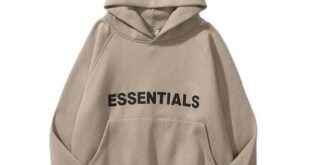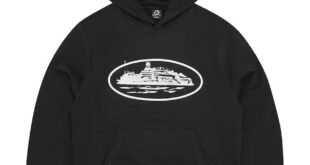Related Articles
Fashion is among the biggest and most powerful industries worldwide. But, it also has a major impact on the environment, leading to pollution as well as waste and unsustainable working practices. As people are becoming more conscious of these problems there is a rising demand for fashion brands that are sustainable. However, how do you determine whether a particular brand is sustainable? Here are a few important factors to look at when selecting eco-friendly fashion labels.
1. Transparency
One of the characteristics of an sustainable fashion company is its transparency. A sustainable brand will be open about its manufacturing processes, materials and the supply chain. They will disclose details on the place where their products are produced and the conditions in which their employees work as well as the environmental impacts of their business. You should look for brands that release environmental reports and have specific page in the website detailing their efforts to be eco ethical as well as socially accountable.
2. Ethical Labor Practices
Sustainable fashion doesn’t only concern the environment. It is also about ethical working conditions. Companies that promote fair wages and safe working conditions and worker’s rights will be more truly sustainable. Certifications such as Fair Trade, SA8000, and the Global Organic Textile Standard (GOTS) are a sign that a company adheres to ethical labour practices. Also, look for brands that have ties with organizations dedicated to improving conditions for workers in the fashion industry.
3. Sustainable Materials
The products used to make clothing are a major contributor to sustainability. Sustainable fashion brands generally use environmentally friendly materials like organic cotton, recycled polyester hemp, Tencel, and bamboo. These fabrics use lower amounts of water, pesticides and energy for production as compared to conventional textiles. In addition, sustainable brands typically are free of harmful chemicals and dyes that could cause harm to water sources and ecosystems.
4. Minimal Waste
Sustainable fashion brands strive to eliminate waste from their manufacturing processes. This could mean the use of zero-waste patterns as well as recycling scraps and recycling leftover materials. Certain brands also take part in upcycling wherein worn out or damaged garments can be transformed into new goods. Through decreasing waste, these companies aid in reducing the quantity of textile garbage that ends in landfills.
5. Eco-Friendly Packaging
Packaging is yet another area where eco-friendly fashion companies can be a big difference. Choose brands that utilize only recyclable, minimal or compostable, packaging. Avoid brands that heavily rely on plastic packaging since it can contribute to pollution in the environment. Some brands that are sustainable also offer recyclable packaging that can be reused and returned to purchase future items.
6. Longevity and Quality
The most environmentally friendly options is to invest in top-quality clothes that last longer. Sustainable fashion brands focus on quality and durability, making sure that their items will endure wear and tear with time. When you invest in durable products, you’ll be able to cut down on the need for regular replacements and also contribute to an environmentally sustainable fashion industry.
7. Local Production
Clothing brands that are made locally usually have a smaller carbon footprint than brands who produce their clothing out of the country. Local production can reduce the requirement for long-distance transport which could significantly reduce the emissions of greenhouse gases. Furthermore, local production could boost the local economy and provide better oversight of the practices employed by workers.
For more information: Friend of The Earth
 Our Gateway to Insightful Blogging Exploring Ideas, Sharing Knowledge, Inspiring Minds
Our Gateway to Insightful Blogging Exploring Ideas, Sharing Knowledge, Inspiring Minds



